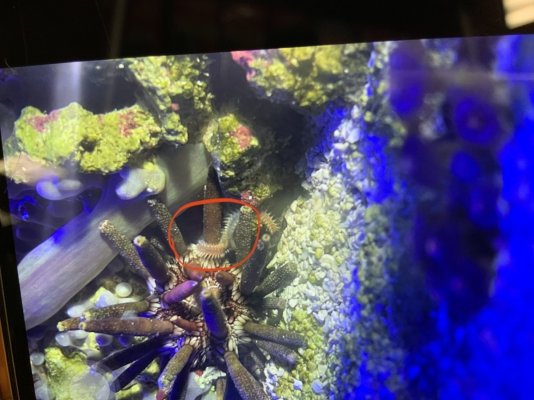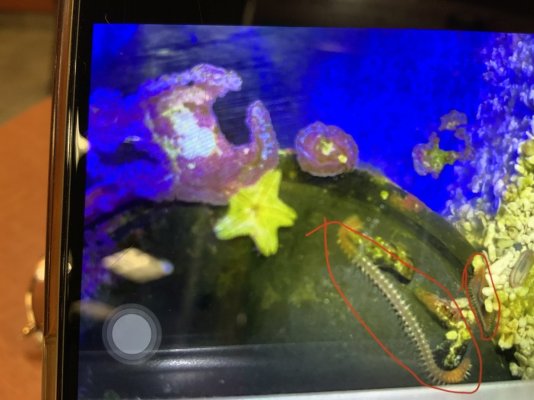Navigation
Install the app
How to install the app on iOS
Follow along with the video below to see how to install our site as a web app on your home screen.
Note: This feature may not be available in some browsers.
More options
You are using an out of date browser. It may not display this or other websites correctly.
You should upgrade or use an alternative browser.
You should upgrade or use an alternative browser.
What are these and should I be concerned
- Thread starter Amtrack5899
- Start date
- Tagged users None
Bristleworms and asterina star, mixed opinions on both, but generally OK. Bristleworms are more about your own tolerance. Some people are grossed out by them (particularly big ones), but they are an important part of the typical CUC (some can sting/irritate skin; such as fireworms, although I have never had that issue). Asterina stars seem to be a little less tolerated, not the same usefulness as CUC, and some potential to bother coral.
Just to add a bit more info on the starfish there:
Yeah, asterina starfish (technically Aquilonastra, but known in the hobby as Asterina). Personally, I like them, but they do reproduce quickly (very quickly), and some people believe they eat corals (see my quotes below).
Yeah, asterina starfish (technically Aquilonastra, but known in the hobby as Asterina). Personally, I like them, but they do reproduce quickly (very quickly), and some people believe they eat corals (see my quotes below).
The quote I referred to in my quote above:ISpeakForTheSeas said:
With regards to whether or not they eat corals, it might be a species specific thing, it might be a you have way too many starfish so they're out of other food options thing, or it might be they're eating the slime coat/mucus on the coral rather than the coral itself (see below).
Timfish said:
It's an Aquilonastra spp. starfish and is a great scavenger. I see them with anywhere from 4 to 12 legs. The whole discusion around them seems to me excellent examples of misidentification, mistaken behaviour and assumed causality based just on heresay without looking at the research. Asterina spp starfish are preditary but only reproduce sexually and are shortlived so while it's possible some might get into a tank even if it did happen it's not going to be around long. Aquilonastra are one of the uncommon species that reproduce fissiparous or by splitting so are easy to identify by the different sized legs regrown after splitting. They perform an important function not only feeding off algae films but also feeding off microbial films including those on corals (at least ones that don't sting). FYI the mucus coating on corals ages and corals have to periodicely shed it to renew it and maintian healthy microbial processes (Ref 1, Ref 2). If Aquilonastra are feeding on zoas or softies I'll argue they are either benign or even beneficial as they may be reducing the unhealthy older mucus which can be full of unhealthy microbes which the animal is trying to get rid of and are far more likely to be the actual problem.
Here's an example, this Toadstool is doing one of it's periodic sheddings. The Aquilonastra have been in this system for years but only climb onto the Toadstool when it's shedding. In the first picture you can see the old mucus film, Aquilonastra starfish and areas they have cleaned off. The second picture shows the Toadstool a week later.


Similar threads
- Replies
- 10
- Views
- 158
- Replies
- 2
- Views
- 131
- Replies
- 18
- Views
- 317















